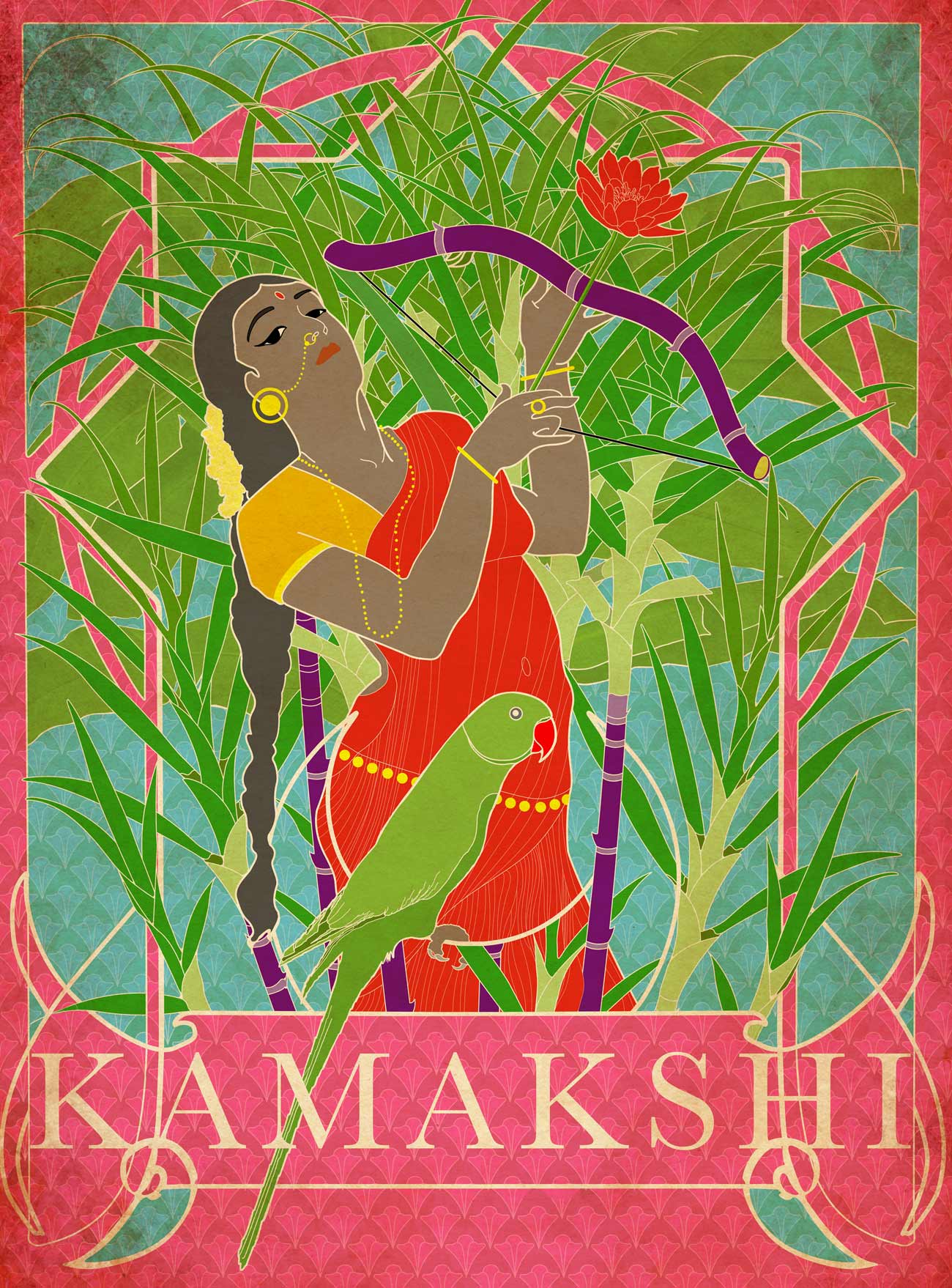- Home
- Kamakshi
Loading...
Kamakshi
by Smruthi Gargi EswarAll orders are insured for transit.
We ship worldwide.
All orders are insured for transit.
We ship worldwide.
Details
| Size: | 36 x 27 inches |
| Medium: | K3 Pigment Print on Archival Paper |
| Style: | Digital Art |
| Edition: | Edition of 10 + 2 Artist Prints |
| Signature: | Bottom Right in English |
Description
In sunshine and starlight, laughter and pain it grows, changing how we feel, what we see and the taste of everything we touch. Red is no longer alarming and blood changes meaning. In Draupadi’s hands it is revenge, in Kali’s it is destruction, and in Kamakshi’s, it is life. We are not hunted but adored by the flowered archer. For some she is a fertile womb, a cleft in a rock that bleeds, marking the coming of monsoon. A season for desire, wisdom, and experience - only a life well lived can know.
About the Series:
This artwork is part of the “Sister Misfortune” series, through which the artist, Smruthi Gargi Eswar, narrates lesser-known stories from Indian mythology, while reflecting on the narrative surrounding women in our culture. Various Indian goddesses (devis) are depicted with a refreshing artistic lens.
In India, there is a constant burden on women to be “Devi-like”. Through this series, the artist attempts a reverse deification of the goddesses, making them appear like real women, in a real world. The series is an exploration not just of duality, but of multiplicity. It compels us to question our attitudes - women towards themselves, men towards women. How does the idea of a goddess coexist within every woman? How do we, as a society, so casually dismiss, disrespect, disregard, and defile in our everyday existence, those who we have bedecked with gold and enshrined in a temple?
-
Description
Read MoreWithout desire all of creation loses its fragrance and the god of desire himself was enchanting. In Kama’s hands the sugarcane bow and flowered arrows are merely mischievous. And he paid with his life for playing with these wonderful weapons of desire. When he took aim, their effects were limited to passion, a trap that one falls into. In Kamakshi’s hands, desire is expansive. A landscape to walk in, eyes wide open, a choice that feels like destiny. A desire for the world and the pleasure of being part of it.
In sunshine and starlight, laughter and pain it grows, changing how we feel, what we see and the taste of everything we touch. Red is no longer alarming and blood changes meaning. In Draupadi’s hands it is revenge, in Kali’s it is destruction, and in Kamakshi’s, it is life. We are not hunted but adored by the flowered archer. For some she is a fertile womb, a cleft in a rock that bleeds, marking the coming of monsoon. A season for desire, wisdom, and experience - only a life well lived can know.
About the Series:
This artwork is part of the “Sister Misfortune” series, through which the artist, Smruthi Gargi Eswar, narrates lesser-known stories from Indian mythology, while reflecting on the narrative surrounding women in our culture. Various Indian goddesses (devis) are depicted with a refreshing artistic lens.
In India, there is a constant burden on women to be “Devi-like”. Through this series, the artist attempts a reverse deification of the goddesses, making them appear like real women, in a real world. The series is an exploration not just of duality, but of multiplicity. It compels us to question our attitudes - women towards themselves, men towards women. How does the idea of a goddess coexist within every woman? How do we, as a society, so casually dismiss, disrespect, disregard, and defile in our everyday existence, those who we have bedecked with gold and enshrined in a temple?
-
ABOUT Smruthi Gargi Eswar
Read MoreSmruthi Gargi Eswar is a painter, graphic artist and storyteller. She studied at the Baroda Faculty of Fine Arts and Chitrakala Parishath, Bangalore briefly. Her art studies started much earlier, while she was still a student at The Valley School KFI. From a fine arts education, Smruthi moved on to graphic design and photography almost immediately. Eventually she returned to the world of art, finding within it, an avenue to explore, address and express at a more personal level. Working with hidden and forgotten mythologies, she brings them to life with a highly unique and singular expression—one that is contemporary while still carrying within it a deep sense of time.
With shows travelling to Berlin & Syke, Budapest, New York, Cochin, Delhi, Mumbai and Hyderabad, Smruthi works from her studio space—Studio Smu—in Bangalore, India. She has also enjoyed collaborating with designers, performance artists and other creative professionals. In 2014, she held a solo show in New Delhi, showcasing works from her “Sister Misfortune” series at acclaimed fashion designer Ritu Kumar’s flagship store. The hugely successful art series, for which Smruthi has been creating works for over a decade, has also been exhibited in Kochi, Bangalore, Mumbai and Hyderabad. Moving on to painting on canvas, she has launched her most recent series, “The Centre is Everywhere”, with Artisera in her home city, Bangalore.
With her photography work published in India and the Philippines, and her performative story telling hosted by Ballhaus Ost in Berlin, Smruthi’s art has been engaged with and collected by art patrons around the world. -
ABOUT Digital Art
Read MoreDigital art is a term used to describe an artistic practice that uses digital technology either as part of the creative or the presentation process. It falls under the umbrella world of new media art. Since the 1960s, various different names have been used to describe digital art, and some of the other commonly used terms include computer art, multimedia art, and even graphic art.
Digital artworks can be created as unique or editioned pieces. To maintain the value and exclusivity of the artwork, an artist would typically destroy the source file (of the artwork), once the number of pre-decided pieces have been sold. Digital artworks may be presented digitally, but more commonly, they are printed works of art that can be hung on a wall, much like a painting.
Contrary to misconception, creating digital art also requires artistic skills such as sketching, drawing and colouring, as digital artists use all of these to create their artworks on the computer. While there may be some lingering debate about the pros and cons of this new age medium of creation, there is no doubt, that digital art has created a vast expansion of the creative sphere.
-
Details
Size: 36 x 27 inches Medium: K3 Pigment Print on Archival Paper Style: Digital Art Edition: Edition of 10 + 2 Artist Prints Signature: Bottom Right in English AUTHENTICITY
This artwork is accompanied by an Authenticity Certificate.
-
Returns
We accept returns within 7 days of delivery if the item reaches you in damaged condition. -
Shipping
This artwork will be shipped rolled. Shipping costs are extra, and will be calculated based on the shipping address.All orders are insured for transit.
We ship worldwide.
This item has been added to your shopping cart.
You can continue browsing
or proceed to checkout and pay for your purchase.
This item has been added to your
shopping cart.
You can continue browsing
or proceed to checkout and pay for
your purchase.
This item has been added to your wish list.
You can continue browsing or visit your Wish List page.
Are you sure you want to delete this item from your Wish List?
Are you sure you want to delete this
item from your Wish List?

































































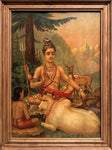















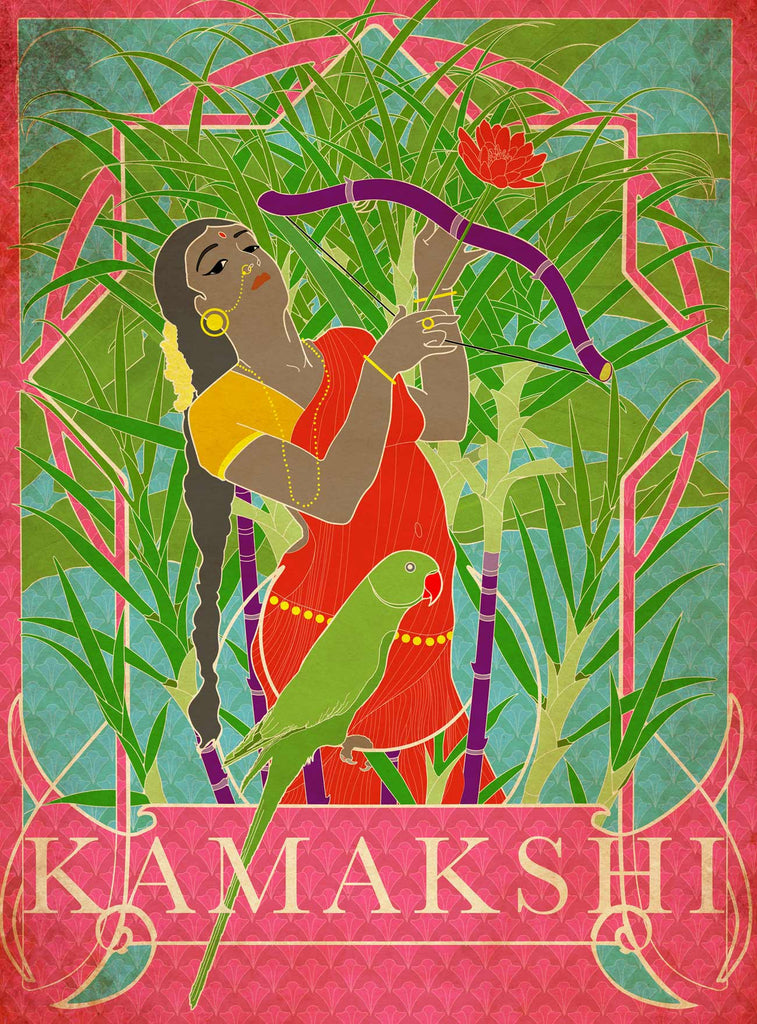
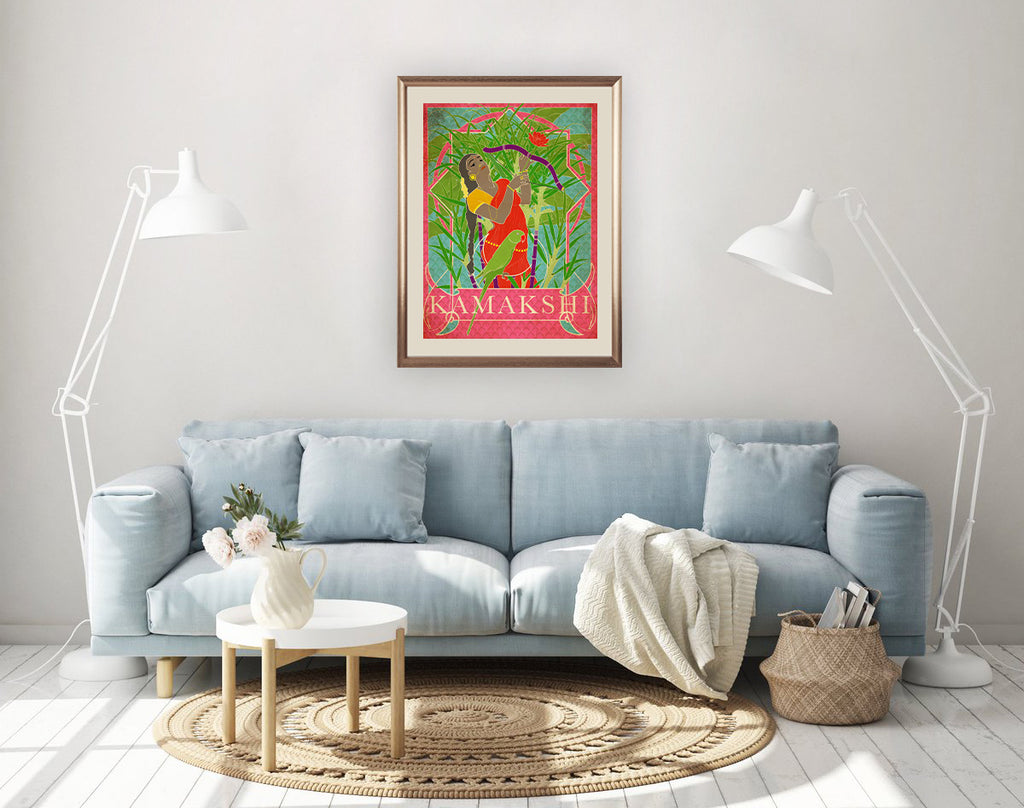
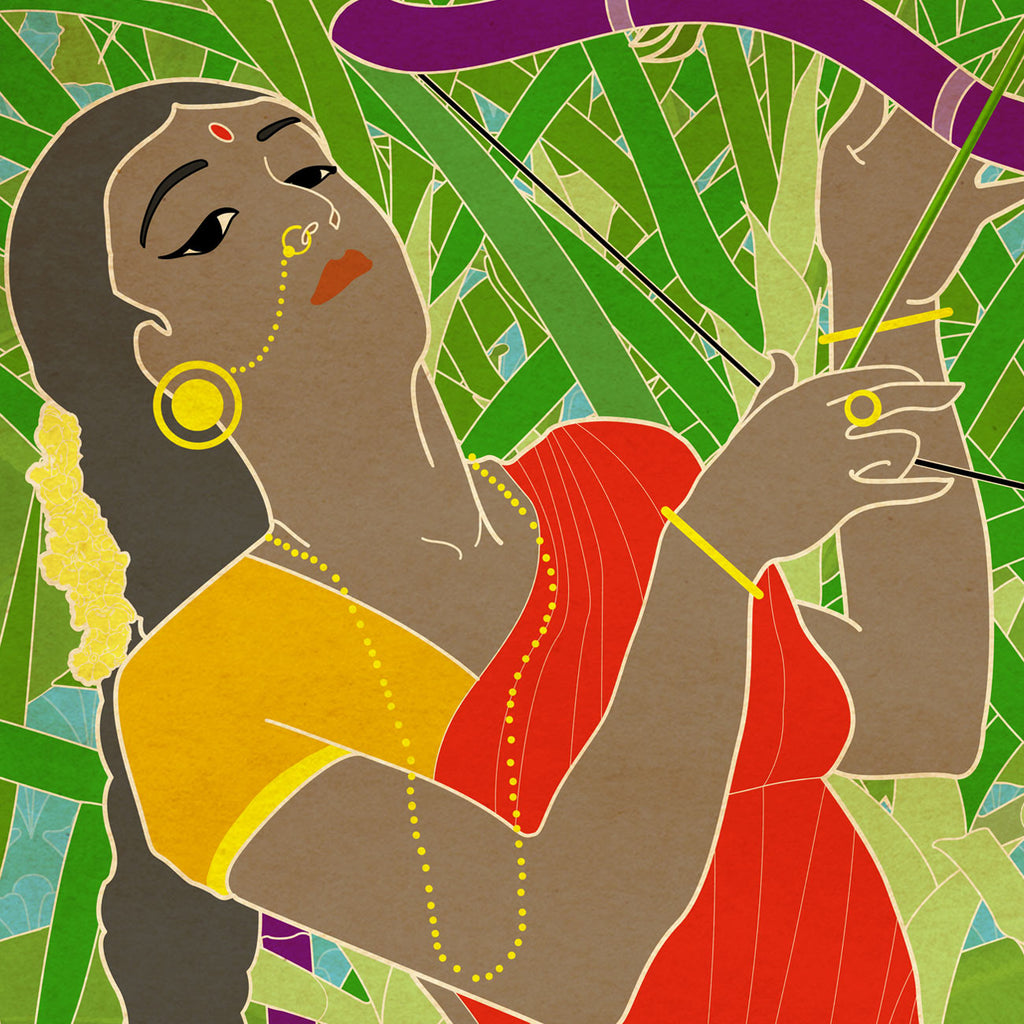
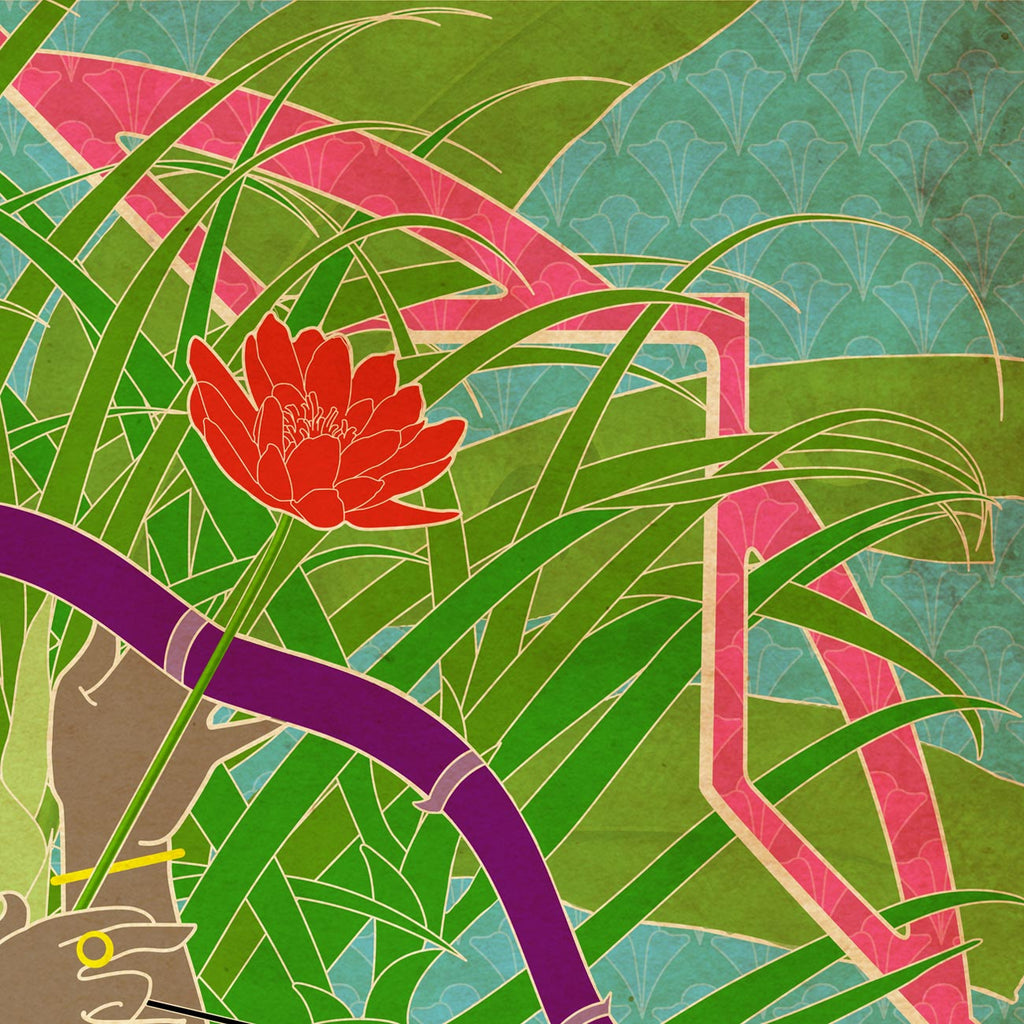
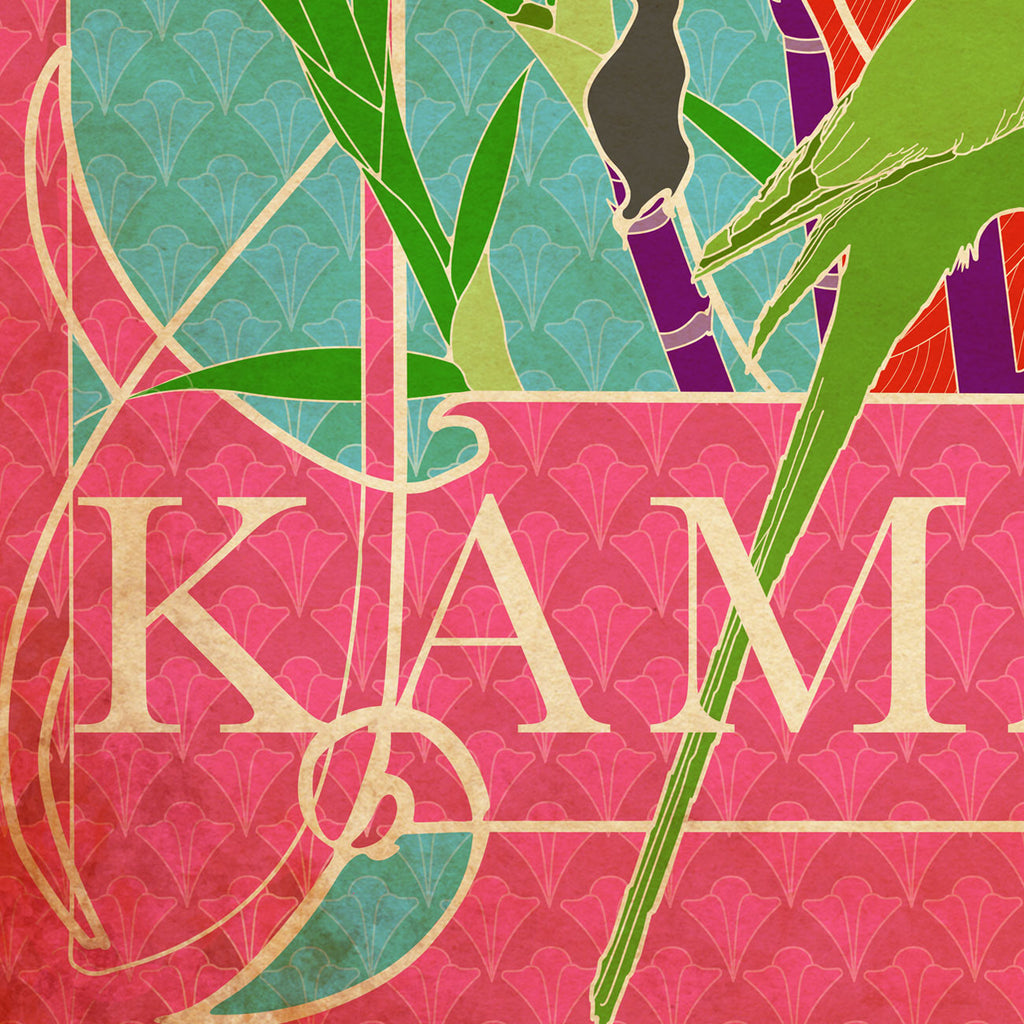
 View Full Screen
View Full Screen
